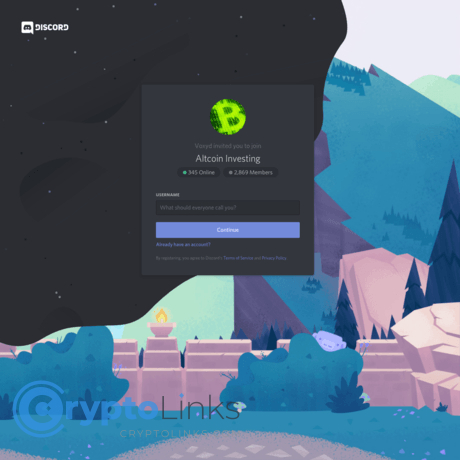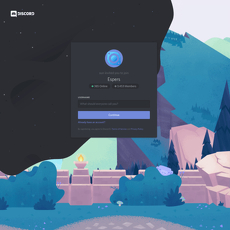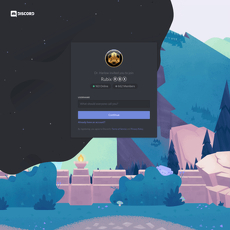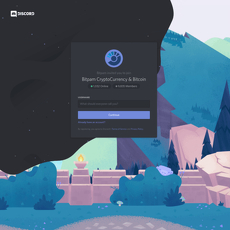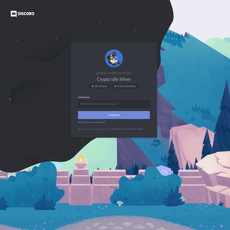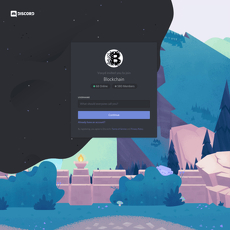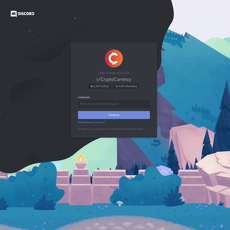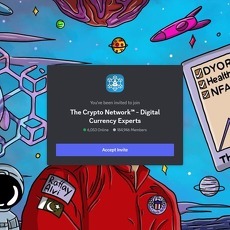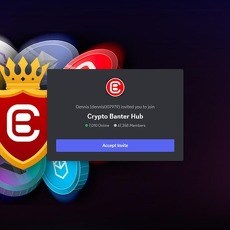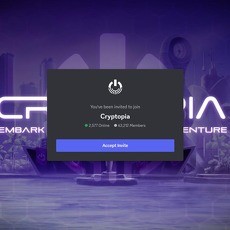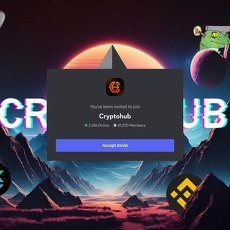Altcoin Investing Review
Altcoin Investing
discordapp.com
Altcoin Investing Discord Review Guide: Everything You Need To Know + FAQ
Thinking about joining the Altcoin Investing Discord—but wondering if it’s actually worth your time and risk? If you’ve ever been burned by hypey calls, noisy channels, or “premium” upsells that don’t deliver, this guide will help you cut through the chaos and use any crypto community like a pro.
Why most crypto Discords feel overwhelming (and dangerous)
Let’s be honest. A lot of crypto servers are built to sell subscriptions, not help you make better decisions. You’ll see screenshots of monster wins, very little context on losses, and calls posted after the move. That’s how people end up chasing tops, over-sizing positions, and blowing up accounts.
- Noise overload: 24/7 pings, conflicting opinions, zero prioritization.
- Cherry-picked wins: Big green screenshots everywhere; red trades quietly buried.
- FOMO loops: “100x soon” slogans with no talk of invalidation or sizing.
- Vanish-at-drawdown mods: Great vibes in a pump; radio silence in a pullback.
- Paywall pressure: “Alpha inside” without transparent performance logs.
It’s not just annoying—it’s costly. Research on retail behavior shows how this plays out:
- Trading is Hazardous to Your Wealth (Barber & Odean) found frequent trading typically hurts returns—exactly what FOMO-driving feeds create.
- Academic work on attention-driven trading (Da, Engelberg, Gao) shows spikes in buzz can pull people into low-quality decisions.
- Studies on crypto pump-and-dump groups (e.g., Xu & Livshits) document how coordinated hype in chats often leaves latecomers as exit liquidity.
“If you don’t have a way to filter and verify, you’ll spend hours chasing ideas and still feel lost.”
The promise: a simple way to use altcoin servers without getting wrecked
You’ll get a battle-tested review framework to judge the Altcoin Investing Discord fast—plus a practical playbook for using it. I’ll show you how to:
- Validate calls with quick checks (timestamping, thesis, risk, and proof).
- Build a clean watchlist from community chatter—without chasing green candles.
- Manage risk with clear invalidations, sizing, and journals.
- Spot red flags like after-the-fact entries, no stop-loss culture, or endless moon emojis.
By the end, you’ll know exactly how to decide if the Altcoin Investing Discord deserves your attention or cash.
Who this guide is for
- New traders who want structure and guardrails before risking real money.
- Busy investors who need a fast way to filter noise and surface credible ideas.
- Experienced users who want to evaluate paid tiers with a cold, objective lens.
What I looked at in this review
- Education vs. signals: Are they teaching process or just shilling tickers?
- Risk culture: Is there talk of invalidations, sizing, and drawdown control?
- Transparency: Are wins and losses both documented with timestamps?
- Moderation quality: Is spam handled? Are scam links policed?
- Incentives and conflicts: Do leaders disclose bags, partnerships, or affiliate angles?
What “good” looks like in 2025
Strong communities in 2025 don’t just post tickers—they teach you how to think. Here’s the bar:
- Clear rules and structure: Read-only channels for signals, archives for past calls, and pinned “how we trade” notes.
- Timestamped calls with reasoning: Entry, invalidation, targets, thesis, and follow-ups—wins and losses.
- Measured expectations: No “guaranteed 10x.” Real talk about market regimes and risk.
- Safety-first culture: Scam link prevention, DM warnings, and reminders to revoke approvals.
- Education you can reuse: Playbooks for watchlists, journaling, and risk—so you’re not dependent on any one person.
Quick note before we go on
This guide is for information and education only. It’s not financial or investment advice. Use it to sharpen your own decision-making, protect your capital, and avoid emotional trades.
Why this matters right now
Crypto attention is spiky, and servers move fast. If you can’t separate signal from spectacle, you’ll get yanked from one hype cycle to the next. A simple checklist and a steady routine can turn the same chat feed from a distraction machine into a real edge—especially when markets get choppy.
Ready to take a closer look at what this community actually offers—and who’s behind it? In the next section, we’ll check leadership, incentives, and what to review in your first 10 minutes inside. Want a fast way to tell if you’re about to join a helpful group or a pump room? Let’s find out.
What the Altcoin Investing Discord is (and how to judge who’s behind it)
Here’s the reality: a crypto Discord can be a research hub or a glossy storefront. The Altcoin Investing Discord pitches education, market ideas, and a community of traders. That’s fine—until you assume the people giving “alpha” are unbiased, skilled, and accountable. Before trusting any call, I want proof of who runs the place, how they make money, and what they’ve actually delivered when markets weren’t friendly.
“Trust is earned in drawdowns, not bull runs.”
Why start with leadership? Because incentives shape everything: the tone of the channels, the quality of research, how losses are handled, and whether paid tiers are about genuine edge or churn. Studies on retail behavior show that attention-chasing and overconfidence are costly—Barber and Odean’s work is a classic example—so it’s on you to separate signal from sales pressure. If you know who’s steering the ship, you can judge the destination.
How to verify who runs it (in under 15 minutes)
I always confirm the humans and incentives behind a server before I let their ideas touch my watchlist. Quick checklist:
- Identify the actual admins and owners. In the member list, filter by roles like “Owner,” “Admin,” or “Head Analyst.” Click profiles. Real operators cross-link to X (Twitter), websites, Substacks, or GitHub. If you only see burner accounts with no history, that’s a caution flag.
- Cross-check their past content. Open their X/YouTube and scroll back six to twelve months. Look for pre-trade reasoning, post-trade reviews, and periods of silence during drawdowns. Silence during a nasty week usually means the claims are curated.
- Look for conflicts of interest. Search their socials and server for words like “seed,” “advisory,” “allocation,” “paid partnership,” “sponsored,” and “ref link.” If an admin shills a token they advised or hold vested allocations in, I want clear disclosure.
- Check for an audit trail. Ask (politely) for a public, chronological call log—not a victory collage. Screenshots with timestamps are table stakes. If they can’t give a plain call log for the last quarter, assume survivorship bias.
- See how they make money. Paid tiers? Affiliate links? Partner exchanges? None of this is bad—but I want it explicit. When revenue depends on constant “hype cycles,” risk education usually takes a back seat.
Tip: Use Discord search with operators like from: (admin handle), in: (channel), and keywords: “seed,” “vest,” “unlock,” “stop,” “loss,” “drawdown.” You’ll learn more in five minutes than any landing page will tell you.
Access, channels, and paid tiers
Most crypto servers follow a familiar layout. Here’s what to expect and how I gauge value fast—before paying a cent:
- Free section (what I usually see):
- General chat, news, a few “sample” charts or watchlists
- Education teasers: basic TA, risk threads, glossary
- Announcements and rules (read-only)
- Occasional delayed “trade recap” posts
- Premium section (what’s often promised):
- Real-time trade ideas with entries/invalidation/targets
- Read-only “calls” or “alerts” channels to reduce spam
- Weekly market breakdowns, voice sessions, or screen shares
- Tools: bots, scanners, unlock calendars, or curated dashboards
- Full trade logs and post-mortems (the gold standard—if honest)
How I evaluate value without getting sold to:
- Read every pinned post in rules, announcements, “how we trade,” and any “performance” channel. Pins reveal structure and standards—or the lack of them.
- Open read-only channels first. They show the team’s voice without noise. Are entries timestamped? Are stops explicit? Are targets updated or left to rot?
- Check time consistency. If a “trade alert” is posted after the move, that’s not a signal—it’s marketing. Compare timestamps against price action on a chart.
- Ask for a recent, unedited sample. One week of raw alerts (wins and losses) is usually enough to judge clarity, frequency, and risk.
- Watch for pricing pressure tactics. “Seats closing,” “price doubles Friday,” “lifetime access ends tonight.” Scarcity sells; edge explains.
Your first 10 minutes inside
If you’ve joined the free tier of the Altcoin Investing Discord, here’s the fastest way I map the terrain:
- Read the rules and verify. Servers that care about safety and behavior are worth more attention. Look for DM-scam warnings and link whitelists.
- Scan the channel list. Education, watchlists, research, on-chain, TA, risk, wins-losses, trade-log, and announcements. Structure signals intent.
- Open “how we trade” or methodology posts. I want to see invalidation-first language, position sizing, and timeframes. If the approach is “ape and hope,” I’m out.
- Search the server for culture indicators:
- “win,” “loss,” “stop,” “stopped,” “drawdown” — do losses appear openly?
- “size,” “risk,” “R:R,” “invalidation” — do they teach or just cheerlead?
- “seed,” “vest,” “unlock,” “advisor” — are conflicts disclosed?
- Open the last 10 calls. For each, quickly note: entry posted pre-move or after? Clear stop? Update after outcome? You’ll know in minutes if the culture is real.
Green flags I want to see
- Clear rules and moderation. Zero tolerance for scam links and DM pitches.
- Education that starts with risk. Invalidation, sizing, max daily loss, realistic drawdowns.
- Timestamped, pre-trade reasoning. Not just arrows—why this setup, what kills it, what timeframe.
- Archived calls with outcomes. Wins and losses presented in the same font size.
- Disclosure of conflicts. If team members have seed or advisory roles, it’s written, pinned, and reiterated.
- Measured language. “Probabilities” beats “100x soon.” Professional tone beats moon emojis.
- Consistent posting through chop. No ghosting during red weeks.
Red flags that save me time and money
- No stop-losses, ever. Or stops that only show up after price recovers—classic revisionism.
- After-the-fact glory posts. Entries that magically appear at the wick low or breakout candle.
- Nonstop hype language. “100x,” “guaranteed,” “can’t lose,” “printing.” Serious traders don’t talk like this.
- Performance claims with no raw log. A collage of screenshots is marketing, not evidence.
- Admin wallets undisclosed while pushing microcaps. If they won’t share addresses or vesting disclosures yet shill illiquid tokens, I assume misalignment.
- Pressure-selling paid tiers. More urgency than transparency.
- Moderators vanish in volatility. Leaders show up most when it’s hard.
How I audit a single call (quick and fair)
- Find the earliest mention. Use Discord search to locate the first post that names the ticker and the intent (buy, watch, short, avoid).
- Check the timestamp against price. Pull a chart and mark the minute. If the “call” came after a 15% move, treat it as commentary, not a signal.
- Look for invalidation. No stop or “tight stop” with no number = no process.
- See how it ended. Was there a stop-out update? Partial take-profit? Or did the thread quietly die?
- Repeat on three calls. Patterns emerge fast—either disciplined or improvisational.
Emotions matter here. FOMO hits hardest in chat rooms where green candles get clapped and red candles get ignored. Academic work on attention-driven trading shows that what gets eyeballs tends to get buys—often at the wrong time. A good server protects you from that impulse by standardizing process; a bad one amplifies it with gifs and chants.
If you’re thinking, “Okay, but how do I score all this without getting swayed by one big win or a slick pitch?”—that’s exactly where I’m headed next. What would a fair, repeatable scoring system look like for any crypto Discord that claims “alpha,” including this one? Let’s break it into pillars and put numbers on it in the next section.
My review framework: how I score crypto Discords that claim “alpha”
I use a simple five-pillar score to compare any crypto server that promises alpha (including Altcoin Investing) without getting seduced by one big win or flashy graphics. It’s pragmatic, it’s fast, and it saves you from hype.
Weights (out of 100):
- Signal quality and evidence — 30
- Risk management and education — 25
- Moderation and spam control — 15
- Transparency and conflicts — 15
- Safety — 15
“In God we trust; all others must bring data.” — W. Edwards Deming
Pillar 1: Signal quality and evidence
I’m not impressed by screenshots of green PnL. I’m impressed by structured signals with timestamps, reasoning, and honest post-mortems. Good signals read like mini trade plans, not lottery tickets.
What I look for:
- Timestamps and pre-trade context: entry zone, invalidation, and catalyst before the move. No “called it” after the candle already exploded.
- Reasoning: narrative plus numbers—liquidity depth, market cap/FDV sanity, unlock schedule, token sinks/sources, and near-term catalysts (listings, emissions change, product releases).
- Evidence: a chart with levels, on-chain holder distribution, or volume/venue analysis. “Feels bullish” is not a thesis.
- Post-trade review: a quick win/loss breakdown, what went right/wrong, and whether the setup belongs on the “A-list” or in the bin.
Practical example:
- Good: “ARB/USDT long at 1.12–1.14; invalidation 1.07; thesis: emissions cut live in 5 days; perps skew flipping; liquidity thick at 1.10; TP1 1.20 (1.5R), TP2 1.28 (3R).” Followed by: “Stopped at 1.07 (−1R). Catalyst priced in early; perps OI flat—our tell failed.”
- Bad: “100x soon. Don’t miss.” Then silence.
Metrics I track (per channel or analyst):
- Hit rate and expectancy (avg win × win% − avg loss × loss%). A 40% hit rate can be excellent if average wins are 2–3R.
- Time-to-invalidation: how fast bad ideas fail. Faster is better (cuts losses quickly).
- Slippage realism: are fills plausible for normal users, or only for the first two people who saw the call?
- Cherry-pick risk: are losers posted as consistently as winners?
Why this matters: retail traders tend to overtrade when they chase signals without structure. Research shows overactive trading often underperforms due to poor decision quality and costs (Barber & Odean, 2000). A server that forces process over FOMO helps you trade less, but better.
Pillar 2: Risk management and education
I grade hard here. A community that can’t talk sizing, invalidation, and drawdowns is not providing alpha—it’s handing you a grenade.
What I look for:
- Position sizing rules: simple guardrails like 0.5–2% risk per trade, max concurrent risk caps, and weekly loss limits.
- Invalidation logic: levels based on structure/liquidity, not vibes. Clear “if X happens, we’re wrong.”
- Education: pinned primers on R-multiples, journaling templates, recorded walk-throughs of trades (wins and losses).
- Patience culture: waiting for price to come to you, not market-ordering green candles.
Example of actual risk language I want to see:
- “Pre-plan: 1R risk, three targets (1.5R, 2.5R, 4R). If news hits and slippage widens, reduce size by 30%.”
- “Five red trades in a row? Drop size to 0.25R until back to even.”
Red flags:
- “All in” jokes that aren’t obviously jokes.
- No discussion of funding, borrow rates, or liquidity when suggesting perps or small caps.
- Stop-losses implied but never posted.
Why this matters: loss control isn’t optional. It’s the difference between a bad week and account ruin. In volatile markets, simple rules like fixed-R stops and reduced sizing in drawdowns can dramatically cut tail risk. Even basic journaling improves decision quality because it slows you down and reduces impulsive trades.
Pillar 3: Moderation and spam control
Signal dies in noise. I want clean channels, quick spam removal, and sane message flow.
What I look for:
- Slow mode in high-traffic channels, with reactions/emojis for quick feedback instead of endless “gm” scroll.
- Thread discipline: one idea per thread; summaries pinned; archived after resolution.
- Bot hygiene: rate-limited price bots, no shady “airdrop checkers,” and clear slash commands.
- Moderator responsiveness: spam/impostor links nuked within minutes, not hours.
Simple KPI I track: meaningful messages to total messages. If 80% of a signals channel is memes and “wen moon,” it’s not a signals channel—it’s a dopamine farm.
Pillar 4: Transparency and conflicts
If a team won’t say how they make money, assume you’re the product. I score for clarity on incentives and performance.
What I look for:
- Disclosure: “We own ABC,” “We’re advising XYZ,” “This link is an affiliate.”
- No paywall pressure: value visible in free channels, paid tiers clearly defined by process not promises.
- Performance reporting: monthly rollups with full trade lists, losers included, fees/slippage considered.
- No forced broker/referral lock-ins for access to content.
Red flags:
- Admins posting entries after big moves.
- DMs pushing “exclusive” low-cap deals.
- Undisclosed bags being shilled as “community finds.”
Why this matters: regulators have warned about social media stock/coin promotions and “pump rooms.” Read the SEC investor alert on social media hype before trusting any “alpha.” Conflicts don’t automatically kill trust, but hiding them does.
Pillar 5: Safety
You can be right on the trade and still lose everything to a bad link. Safety is non-negotiable.
What I look for:
- Verification level enabled; DM warnings front-and-center; “Disable DMs from server members” guide pinned.
- Domain allowlist for links; link previews disabled in sensitive channels; auto-delete unknown TLDs.
- Incident runbook: what happens if an admin account is compromised (lockdown, revoke invites, cross-post warning, rotate bot tokens).
- Regular security reminders: 2FA, hardware wallets, revoking approvals.
Why this matters: phishing still dominates crypto theft. Chainalysis notes social engineering and fake sites remain a major vector in recent years (2024 Crypto Crime Report). A good server beats scammers with process, not luck.
How I tally the score
I rate each pillar 0–5, multiply by the weight, and sum to 100.
- 90–100: rare. Evidence-rich signals, strict risk culture, clean moderation, full disclosures, strong safety.
- 80–89: strong daily driver; worth paying if education + logs are consistent.
- 70–79: useable with filters; stay in free tier until they prove consistency.
- <70: treat as entertainment, not research.
Quick reality check: One epic win doesn’t outweigh months of sloppy process. I’ve seen servers nail a 10x and then bleed it back across a hundred undisciplined calls. Consistency is the edge.
Want to see how I turn a “hot tip” from any server into a structured watchlist item—thesis, catalysts, levels, and alerts—in 10 minutes flat? Keep reading; I’ll walk you through the exact routine next and hand you the checklist I use every day.
How to actually use this Discord to research altcoins (without getting wrecked)
Most people jump into crypto servers, copy the loudest call, and wonder why they’re stuck holding a bag that won’t bounce. I treat every “alpha” post as a research lead, not a buy signal. Here’s the routine I use to turn noise into clean, repeatable research—so you learn faster and protect your stack.
From “hot tip” to watchlist
Any time I see a call in the server, I run it through the exact same checklist. No exceptions. I want a clear thesis, a realistic path for price to move, and proof the market can absorb my order without insane slippage.
- Thesis + catalyst: Why should this move soon? Upcoming mainnet, new listing, fee switch, product launch, or narrative tailwind (AI, RWA, L2s). No catalyst = low priority.
- Liquidity: Daily volume, depth on DEX/CEX, and spread. If $5,000 moves the price 3% on a DEX, I won’t touch it with size. Check CoinGecko or CMC for volumes and Dexscreener/GeckoTerminal for pools.
- FDV and supply overhang: Market Cap vs. Fully Diluted Valuation. A $90M MC with a $900M FDV and heavy emissions is a red flag. Use TokenUnlocks or Messari to see unlock schedules. Binance Research has shown unlock events can pressure price—timing matters.
- Emissions/unlocks: What % of supply unlocks in the next 30–90 days? Team/VC cliffs? High monthly emissions = constant sell pressure.
- Team and shipping pace: Real builders or ghost accounts? Check GitHub commits, previous projects, and whether the roadmap is more than a meme graphic.
- On-chain holders: Top 10 wallets concentration, smart money in/out, and contract risks. Use Etherscan (or chain explorers) and holders tab; skim comments for warnings.
- Exchange venues: Where can you trade it? CEX-only, DEX-only, or split? New listings can be catalysts, but also exit liquidity for early investors.
- Technical context: Trend, structure, key levels. If price is vertical, I mark fair entries and wait. Chasing green candles is how accounts disappear.
Real example (hypothetical): A member posts “$ATOM-X L2 airdrop farm now—listing soon.” I log it. FDV shows $2B on full supply, 18% unlock in 45 days, top wallet owns 22%, DEX liquidity is thin, and volume spikes are bot-driven. Catalyst is real, but supply risk is massive. I tag it “watch only” and set alerts near supports; not touching pre-unlock. No FOMO—just data.
How I log and tag: I keep a simple sheet or Notion board with fields: Ticker, Link to post, Thesis, Catalyst date, MC/FDV, Liquidity notes, Unlocks, Holder concentration, Venues, Risk (Low/Med/High), Status (Watch/Active/Avoid). I tag narratives like “AI,” “Restaking,” “GameFi.” Then I set alerts in TradingView or my exchange for key levels and catalyst dates.
Entry, exit, and journaling
I decide invalidation before I even think about entries. If I can’t define where I’m wrong, I’m not in a trade—I’m in a hope.
- Risk first: I cap per-trade risk to a fixed % of my account (example: 0.5–1%). If my stop is 12% away, my position size = Account Risk / 0.12. On a $5,000 stack risking 1% ($50), I size ~$416. No more, no less.
- Entries: I prefer limits at structure (prior resistance turned support) or after a proper pullback. If the idea is “breaking news,” I’ll often let it go—my job isn’t to buy highs.
- Scaling: I scale in if price confirms (higher low, reclaim, or on-chain buyer footprint) and scale out into strength at 1R/2R targets. Partial profits remove emotion.
- Stops: I put them where the thesis is invalidated, not under a random wick. If I can’t place a stop without sitting under obvious liquidity, I reduce size or skip.
- Journaling: I record the idea source (channel link), pre-trade plan (why, levels, risk), and post-trade notes (what worked, what didn’t, screenshots). Even a 2-minute journal helps. Research in behavioral finance (see Barber & Odean, 2000) shows overtrading crushes returns; journaling curbs impulsive trades and FOMO.
Simple sanity check: If I can’t explain the catalyst and the risk in one sentence each, I pass.
“Slow is smooth, smooth is fast.” In markets, patience compounds. FOMO does not.
Make the server work for you (not the other way around)
- Pin-hunting: I read pinned summaries and “how we trade” notes before acting on any call. If a claim isn’t supported by a chart, data, or a clear thesis, it goes to low priority.
- Cross-check members: I compare takes from at least two different members. If one’s hyped and another flags unlock risk, I side with the more conservative view or reduce size.
- Avoid chasing: If price has already moved 20–30% since the call, I set alerts for a pullback instead of forcing entries. There’s always another setup.
- Mute ruthlessly: I mute channels that don’t match my style (e.g., scalps if I swing trade). Less noise = better decisions.
- Security-first: I disable server DMs, never click wallet-connecting links from DMs, and only use links in official “links” channels. I also revoke token approvals regularly with tools like revoke.cash.
- Event reminders: I set calendar reminders for unlocks, listings, and governance votes. Most “surprises” are just ignored dates.
One more real sample: A channel shouts about a mid-cap gaming token ahead of a big partnership announcement. Liquidity looks fine; FDV isn’t insane. I map a level just below a reclaimed weekly level, set a stop under it, plan to trim 30% at 1R, another 30% at 2R, and trail the rest under higher lows. If the announcement underwhelms and price nukes my level, I’m out—no averaging down into a narrative that lost steam.
Quick rule I live by: hype can start a move, but only liquidity and supply keep it going. If those aren’t on your side, skip or scale small.
Curious what realistic results look like when you follow a routine like this—and how to adjust when the market flips from bull to chop to bear? In the next part, I’m going to show you what “good” actually looks like in 2025, how to set expectations, and a simple way to know if your server is helping you or quietly dragging your performance. Ready to stress-test your goals?
Expectations in 2025: what “good” looks like (and what’s pure fantasy)
Crypto is loud, fast, and unforgiving. Good communities help you think better and protect your downside; they don’t promise magic. Set your bar here: can this server sharpen my decisions across different markets, match my style, and keep me focused on risk? If yes, you’ll last. If not, you’ll chase, churn, and burn.
“Amateurs focus on returns. Pros focus on risk.”
Market regimes and hit rates
All “alpha” lives inside a regime. Expect the culture and the call quality to change when the market does.
- Bull (trend up, high liquidity): Hit rates rise across the board, even for simple momentum. Good groups still push invalidations, scale-outs, and reminders to take profit into strength. Fantasy is constant 10x calls and after-the-fact entries. Real value is clear setups with levels, not moonshots.
- Chop (range-bound, fakeouts): This is the PnL shredder. Good groups slow down, emphasize patience, and post fewer, higher-quality ideas. Weak ones spam intraday calls and quietly delete losers. Expect longer wait times between A+ setups and more “no trade” days.
- Bear (downtrend, illiquid alts): Most altcoins bleed 70–90% in bears historically. Good groups lean into education, portfolio defense, and capital preservation. They discuss cash positions, majors over micros, and longer-term DCA plans. If a group goes silent or pivots to the “next meta” every week, that’s your sign.
On hit rates, be honest with the math. A realistic trader can be profitable at a 45–55% win rate if position sizing is sane and winners are bigger than losers. Example: winning 45% of trades at +2R and losing 55% at -1R still makes +35R every 100 trades. Fantasy is 80–90% win rates with no proof and no stops.
One more reason to ignore noise: research on retail accounts shows overtrading crushes returns. Barber and Odean’s famous study called it plainly: “Trading Is Hazardous to Your Wealth.” Fewer, cleaner bets usually beat constant action.
Timeframes and styles
Your results will mirror the channels you consume. If your style and the server’s flow don’t match, you’ll feel late or reckless.
- Swing (days to weeks): Look for higher time frame levels, catalysts, and clean invalidations. Expect fewer alerts and more patience. Winning looks like +2R to +4R moves; fantasy is catching every wick.
- Momentum (hours to days): You need fast execution and clear rules. Expect more fakeouts in chop, better follow-through in strong trends. Good groups flag liquidity and slippage risks on small caps.
- Long-term holds (months+): You’re betting on fundamentals, product-market fit, and token flows. Expect long periods of nothing, then sudden repricing. Realistic is taking profits on 2–5x moves and rotating to majors or stables. Fantasy is “never sell” in altcoins with heavy emissions.
Quick sanity trick I use: mute channels that don’t fit your timeframe for two weeks. If your stress drops and your PnL improves, you’ve found your lane.
Taxes, logs, and getting paid for patience
What you keep matters more than what you make. Short-term trading may be taxed higher than long-term holds in many regions. Also, high turnover means more taxable events and fees. Keep it simple:
- Log everything: date, size, entry/exit, thesis, invalidation. Export CSVs monthly. Your future self (and your accountant) will thank you.
- Review monthly, not daily: Look at risk-adjusted results, not just raw PnL. Did you stick to invalidations? Were losers small and quick?
- Plan for taxes: Set aside a % of realized gains as you go. Nothing ruins a good year like an April surprise.
If you hate logging, you’ll love bleeding. A 10-minute journal per session will beat any “alpha” without discipline.
Cold storage for profits: simple rules that actually stick
Taking profit is easy to say and brutal to do. I use mechanical rules that remove my feelings from the process:
- Pay yourself: On 2x, withdraw the initial cost to cold storage. You’re now playing with house money.
- Step-down bank: Every +50–100% move, move 10–20% of position into BTC/ETH or stables on a hardware wallet. Label addresses so nothing gets “lost.”
- Separate stacks: Trading stack in a hot wallet; long-term stack in cold storage. Mixing them is how profits “magically” evaporate.
If a server celebrates withdrawals and safety as much as wins, that’s a green flag. If “security” lives in a forgotten channel, adjust your expectations.
Alerts that stop doom-scrolling
Your attention is your edge. Guard it. Tools should pull you in only when your setup is near, not when memes are pumping.
- Price alerts at your levels: Support, resistance, invalidation—not “random buzz.”
- Calendar alerts: Token unlocks, major listings, FOMC days, roadmap events. Fewer surprises, better reactions.
- Timeboxing: Check Discord on a schedule. No charts after your daily close. If there’s no alert, there’s no trade.
“I’ll just check for a minute” is how most traders turn good weeks into mediocre months. Protect your attention and your win rate usually improves.
Bottom line for 2025: Expect fewer, better trades; realistic hit rates; slower pacing in chop; and a boring but repeatable process that moves profits off-exchange and out of reach. Anything promising perfect wins, daily income targets, or guaranteed 100x “soon” belongs in your mute list.
Want the exact scanners, unlock trackers, on-chain dashboards, and safety checks I use to make all of this painless? I’m about to show you the full toolkit—what do you actually need, and what’s just shiny noise?
Alternatives and complements: tools, feeds, and other places to learn
One Discord can sharpen your thinking, but it won’t cover every angle of altcoin research. I mix community signals with a lean stack of scanners, on-chain tools, and security habits so I’m never reliant on a single source. Here’s the exact toolkit and routines I use to validate ideas fast and avoid being exit liquidity.
Building your toolkit
I want three things from tools: speed (catch moves early), context (why a move might stick), and risk checks (what can nuke it). This starter stack covers that—mostly free.
1) Price, volume, and liquidity scanners
- TradingView Crypto Screener — Filter by 24h % change, relative volume, and market cap to spot momentum without leaving majors.
- DEX Screener and GeckoTerminal — Real-time DEX pairs, liquidity, and top trader flows on new coins. I sort by 24h volume and filter out pools with thin liquidity (<$100k).
- CoinGlass — Open interest, funding, and liquidation heatmaps. If funding spikes positive while price chops, I’m cautious on long momentum.
- Birdeye (Solana) — Depth-by-depth orderbook and liquidity routing. Great for judging slippage before you touch new SOL tokens.
2) Tokenomics, unlocks, and supply pressure
- TokenUnlocks — Unlock schedules and cliff sizes. Large unlocks close to your entry often add short-term headwinds. Kaiko’s research has shown unlocks can boost volatility and weigh on prices around the event—especially for low-float tokens.
- DeFiLlama — TVL trends, fees/revenue, treasuries, and raises. If fees rise while FDV is modest, I pay attention; if TVL leaks and emissions are high, I’m wary.
- Token Terminal (freemium) — Protocol revenue and fundamentals. It won’t call tops/bottoms, but it helps avoid paying venture valuations for zero-fee products.
3) On-chain sanity checks
- Etherscan / Solscan — Holders, top wallet concentration, and contract age. I avoid tokens where top 10 holders own >50% unless there’s a clear lockup and rationale.
- Dune — Community-built dashboards. I search for the project’s name + “holders” or “retention” to see real user behavior.
- Nansen and Arkham (advanced) — Labeled wallets and smart money flow. Helpful for verifying whether respected wallets are actually accumulating or quietly exiting.
4) Catalysts and news that actually move price
- CoinMarketCal — Filter for high-confidence events (exchanges, mainnet launches, tokenomics updates). I tag events that align with my thesis and set alerts.
- Messari — Project profiles, governance updates, and sector overviews. Great for context before you size in.
- Exchange listings and liquidity venues — The same idea posted in a small-cap room hits different if there’s an impending tier-1 listing or liquidity migration.
5) Development and community resilience
- Project GitHub (linked from the official site) — Look for consistent commits over months, not just “hackathon spikes.”
- Electric Capital Developer Report — Their annual data consistently shows ecosystems with strong, persistent developer bases tend to be more resilient across cycles.
- CryptoMiso — High-level commit rankings by repo. It’s a rough proxy—combine it with real repo audits.
6) Curated X (Twitter) feeds to cut noise
- Research and data: Messari, Kaiko, Santiment
- Security: Scam Sniffer, ZachXBT
- Derivatives and flows: CoinGlass, Coin Metrics
I keep these in a private List and check them before acting on any community call. If a “hot” token isn’t showing up anywhere in these streams, I slow down.
Two quick examples from my workflow
- Momentum setup (scalp to swing): Idea pops in a chat → confirm 1h trend and volume on TradingView → check pair liquidity and top traders on DEX Screener → scan funding/OI on CoinGlass → search unlock schedule on TokenUnlocks. If a big unlock is 48 hours away and funding is ripping, I either pass or size tiny with a tight invalidation.
- Rug-avoidance check (brand-new token): Pull contract on Etherscan → holder distribution and liquidity lock status → verify website + socials via WHOIS and official links → look for any Dune dashboard showing real users. If top wallets are all fresh and the website domain was registered last week, that’s a hard no for me.
Protecting yourself
You can’t research well if you’re worried about getting drained. Security isn’t optional—especially when links and attachments flow through Discords.
Wallets, approvals, and transaction safety
- Hardware wallets: Trezor, Ledger, Keystone, GridPlus. Keep a cold wallet for long-term holdings and a separate hot wallet for experiments.
- Revoke spend approvals: Revoke.cash or Etherscan Token Approvals. Set a calendar reminder to clean approvals weekly if you click a lot of new dApps.
- Transaction guards: Wallet Guard, Pocket Universe, Scam Sniffer extensions warn on malicious signatures before you sign.
Browser and Discord hygiene
- Separate profiles: Use a dedicated browser profile for wallets. On Firefox, Multi-Account Containers isolates sites and cookies.
- Download discipline: Never run “wallet updaters” from DMs. If a link looks off, scan it via urlscan.io or VirusTotal first.
- Report bad links fast: Use the server’s report channel and Discord’s built-in reporting. The quicker mods see it, the fewer people get hit.
Why so strict? Because scammers exploit social platforms. Chainalysis’ Crypto Crime reports have tracked billions in annual illicit flows, with phishing and impersonation as persistent vectors. The best protection is boring: hardware wallets, revoking approvals, and slowing down at the signature screen.
“Trust, but verify on-chain.” If I can’t validate a claim with one of the tools above in under 5 minutes, I treat it as entertainment—not a trade.
Free first, then pay only for a clearly stated edge
You can get 80% of the value without spending a cent. Before you subscribe to anything—whether it’s a tool or a premium Discord—write the edge in one sentence.
- Free baseline: TradingView + DEX Screener + DeFiLlama + TokenUnlocks + Etherscan/Solscan + Dune + a curated X List. That’s enough to validate most altcoin ideas.
- When I upgrade: If I need labeled wallet flows (Nansen), deeper fundamentals (Token Terminal Pro), or on-chain alerts at scale. I trial monthly, run a 30-day log of time saved and mistakes prevented, then either keep it or cancel.
Simple test I use: if a paid tool or group can’t demonstrably reduce my research time or my loss frequency in a month, it’s not an edge—it’s a distraction.
Ready for the real question: with this toolkit in place, does that popular altcoin Discord actually add signal—or just noise? I’ll show you exactly how I answer that next.
FAQ and final take: is the Altcoin Investing Discord worth it?
I get asked the same questions every week, so here are straight answers and a simple way to tell if Altcoin Investing deserves your attention or your money. Short version: start free, test with a clean process, and only upgrade if they prove they’re adding real edge to your decisions.
Popular questions I’m asked
Which coin can make you a millionaire in 2025?
There’s no guaranteed ticket. Large caps like BTC/ETH/SOL give you liquidity, better execution, and lower blow-up risk. Tiny caps can 10x, but most don’t. History shows a lot of new tokens underperform majors after listing, especially once early emissions hit and liquidity thins. If you ever feel like you’re buying a lottery ticket, you probably are. Focus on process—catalysts, liquidity, unlocks, and risk—over wishful thinking.Can you make $500 a day with crypto?
Possible, but chasing daily income targets pushes traders into overtrading and revenge trades. A well-cited Brazilian study of day traders found that 97% lost money and only a handful earned minimum wage after fees (SSRN: Day Trading for a Living?). Research on Taiwan day traders shows similar patterns: only about 1% are consistently profitable (SSRN: Do Day Traders Rationally Learn). Think in weekly or monthly terms, size risk sanely, and accept variance. Daily quotas almost always end badly.Is this Discord a pump group?
You can spot it fast. Red flags:- Calls are posted after the move, no timestamped pre-thesis or stop.
- They push illiquid tokens with thin order books (1–2% depth is tiny) and never discuss slippage or size.
- “Buy now, phase 2 soon” with zero catalyst detail, or pressure to deposit to a specific exchange or referral link.
- Admins brag screenshots without verified entries/exits or post-only wins.
- Price spikes immediately after the ping, then bleeds while leaders go quiet.
Green flags are the opposite: pre-trade plan, invalidation, post-trade reviews (including losses), and no shilling of trash liquidity.
Are paid tiers worth it?
Only if they’re measurably improving your decisions. Run a 30-day scorecard before paying:- Are calls timestamped with reasoning, invalidation, and risk/reward upfront?
- Do they archive outcomes and discuss losses without spin?
- Is there structured education you’ll actually use (levels, sizing, journaling)?
- When you paper-test 5–10 ideas you found there, is your process clearer and your drawdown smaller?
If the free tier already upgrades your process, a monthly (not annual) trial of paid might be worth it. If not, keep your wallet closed.
Is it safe?
Any crypto Discord has risk. A safer server will:- Lock links to whitelisted domains and auto-delete suspicious URLs.
- Warn about impostor DMs and encourage turning off “Allow DMs from server members.”
- Use verification, 2FA reminders, and a clear report channel for scams.
- Ban wallet-connecting links in chat and forbid airdrop/“support” DMs.
You should still use a hardware wallet, revoke approvals regularly (revoke.cash), and never connect a wallet from a Discord link.
Quick story: last cycle I watched a microcap call rip 60% within two hours of a ping. Spread was awful, depth was thin, slippage was 5%+ for normal size, and it unwound 40% by next day. Without a plan and position sizing, “wins” like that drain accounts. The problem wasn’t the idea—it was execution and risk.
How I’d use this server if I were you
- Join free and set roles so you only see channels that match your style (swing, momentum, long-term).
- Read pinned posts, then pick 5 recent ideas and paper-test them: thesis, catalyst, levels, invalidation, and realistic sizing.
- Build a watchlist with alerts; don’t chase green candles. Let price come to your levels.
- Journal outcomes: entry plan vs. reality, slippage, stop adherence, catalyst played out or not.
- When your process feels tighter and your bad trades are smaller, start small size with hard invalidations.
- Only consider paid after two to three weeks of clear improvement and visible transparency.
What would make me upgrade
- Transparent call logs: timestamps, entries, invalidations, and post-mortems.
- Honest loss reviews: specific lessons, not excuses.
- Structured education: repeatable modules on sizing, playbooks for different market regimes, and examples.
- Active moderation: spam control, zero tolerance for scam links, and fast admin responses.
- Utility: tool discounts, live sessions/office hours, and clear calendars (unlocks, catalysts, listings).
What would make me leave
- After-the-fact screenshots instead of real-time plans.
- No stops, no risk talk, and “100x soon” culture.
- Paywall pressure, copy-trading bots pitched as effortless income, or referral shilling.
- Silence during drawdowns or bullying when members ask for accountability.
Final take
Is the Altcoin Investing Discord worth it? It can be—if it consistently shows transparent calls, real risk education, and active safety. Start free, mute the noise, and test whether it improves your decisions for 2–3 weeks. If you see measurable edge, try monthly paid; if not, stay free and keep filtering.
Use communities to shorten your research loop, not to outsource it. Protect your capital first, let good habits compound, and remember: it’s your process—not a server—that pays you.
CryptoLinks.com does not endorse, promote, or associate with discord servers that offer or imply unrealistic returns through potentially unethical practices. Our mission remains to guide the community toward safe, informed, and ethical participation in the cryptocurrency space. We urge our readers and the wider crypto community to remain vigilant, to conduct thorough research, and to always consider the broader implications of their investment choices.

